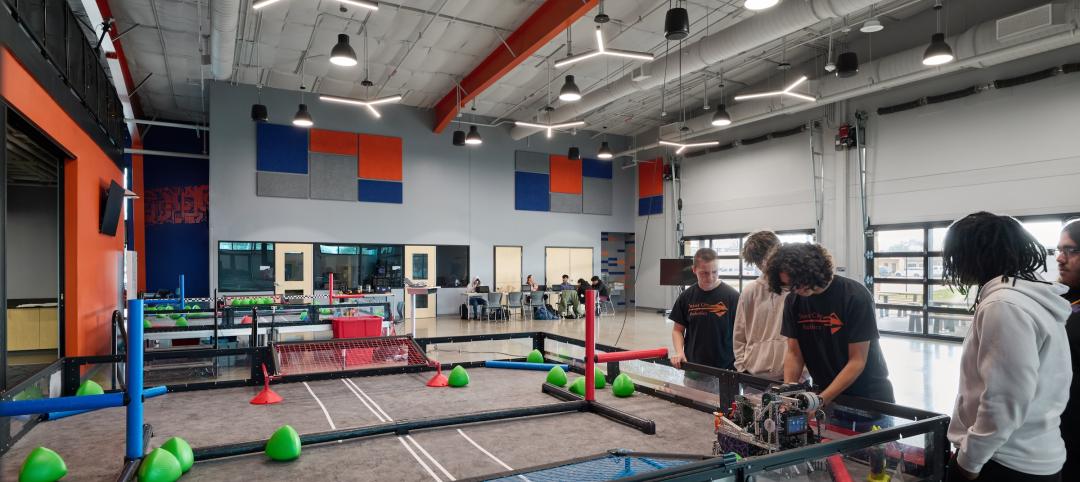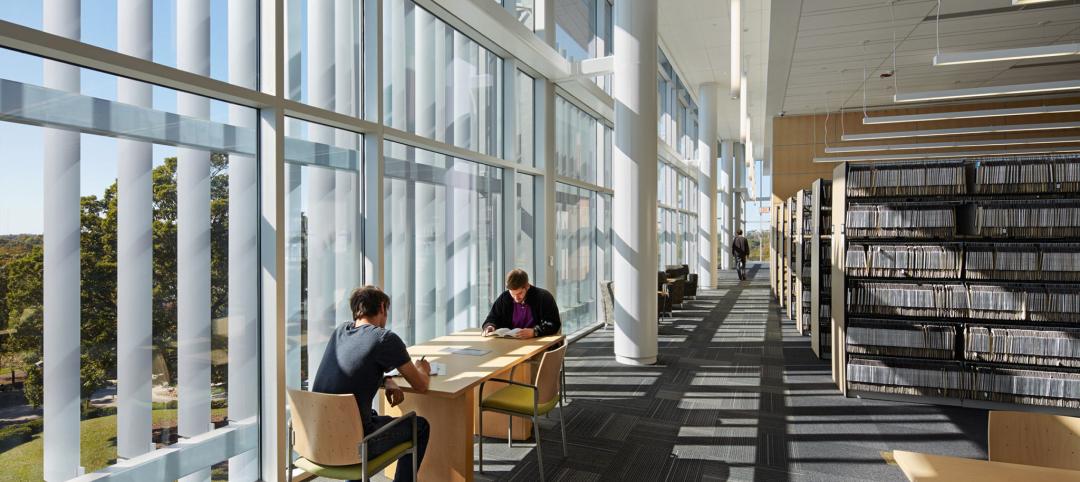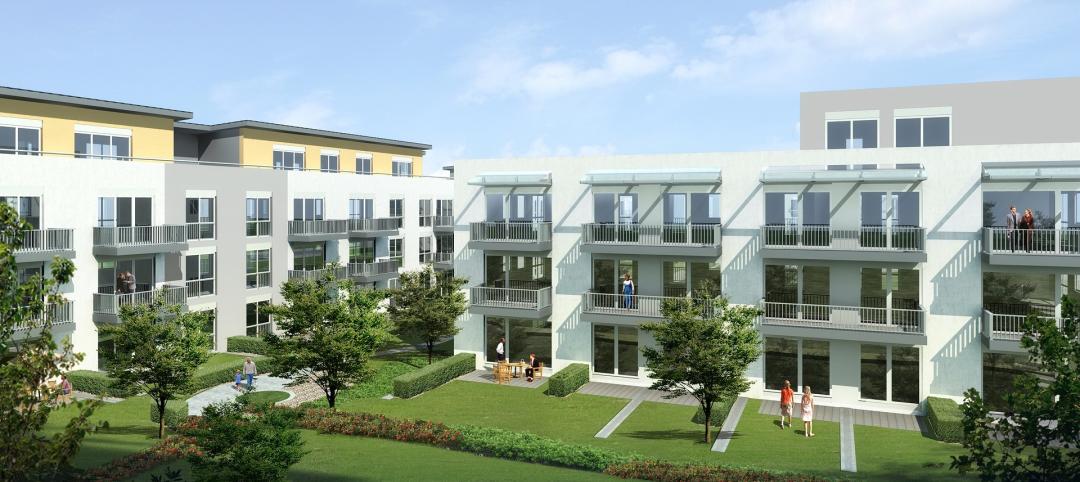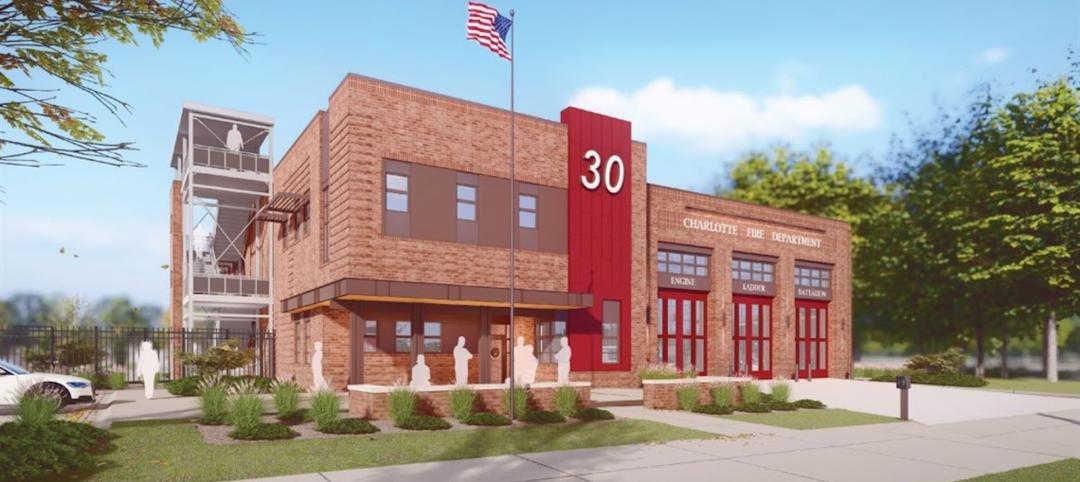Evolving into more comprehensive design-build services was the driver behind CannonDesign’s recent merger with gkkworks, an integrated planning, design, and construction firm.
Founded in 1991, gkkworks employs 120 people in its offices in Irvine, Pasadena, and San Diego, Calif.; Denver; and Pune, India. (CannonDesign has an office in Mumbai.) Its annual revenue ranges from $50 million to $60 million.
Praful Kulkarni, president and CEO of gkkworks, says his goal has been to “create a firm with multiple professionals to customize the design process.” He notes that his company’s progressive design-build delivery model is promulgated on the belief that “architecture and construction are inseparable.”
Kulkarni’s new title at Cannon Design is director of integrated services, focused on advancing the combined firm’s design and construction capabilities.

Praful Kulkurni is now Cannon Design's director of intergated services, focused on the firm's design and construction capabilities. Image: courtesy of Cannon Design
Last year, Fast Company magazine recognized CannonDesign as one of the 10 most innovative architectural firms in the world. CannonDesign became acquainted with gkkworks through a “client connection,” says Brad Lukanic, AIA, LEED AP, CannonDesign’s growth-minded CEO.
Merging with gkkworks expands CannonDesign’s west-coast partnerships and moves the firm into the hospitality sector. Lukanic further explains the rationale behind this merger by stating “we’re finding that the industry is really hungry for alternative delivery methods. When there’s a single source of delivery, fewer mistakes are made.”
Cannon Design got into integrated modular design two years ago. Based on post-occupancy studies that CannonDesign has conducted on those subsequent projects, its delivery model is reducing delivery times by 28%, lowering costs by 20%, and reducing material waste by 30%. Kulkarni observes that these results “rest on involving the construction company at the point of selection.”

Deb Sheehan, Cannon Design's Executive Director-Firmwide Strategies, is looking forward to her company working earlier with subs and suppliers. Image: Cannon Design
Merging with gkkworks extends CannonDesign’s delivery reach to the supply chain, says Deb Sheehan, CannonDesign’s Executive Director-Firmwide Strategies. The company is already collaborating with GCs, and has started to include large subcontractors such as Hill Mechanical in early design discussions. Sheehan speaks enthusiastically about working sooner with suppliers and subcontractors to get costs down.
When asked why more firms should go the IDP route, Kulkarni cites a U.S. Supreme Court ruling that, he says, set “an impossibly high bar” for the accuracy of design drawings. In any disputes among building team members or with clients, that ruling “became a defensive position.” But when design and construction are integrated, “you no longer have these disputes.”

Since joining Cannon Design in 2016, CEO Brad Lukanic has been acquisition minded. Image: Cannon Design
“I believe our firm can play a vital role in a unified approach, as clients seek integrated solutions that link a project’s design and delivery phases,” says Lukanic. “By breaking traditional boundaries, our firm seeks to delivery every project aspect—from shaping the design experience to final construction.”
Its merger with gkkworks brings to 24 the number of offices Cannon Design operates. Over the next several months, Cannon Design and gkkworks will be combining their respective operations, “especially in California,” says Lukanic.
Related Stories
K-12 Schools | Aug 8, 2024
New K-12 STEM center hosts robotics learning, competitions in Houston suburb
A new K-12 STEM Center in a Houston suburb is the venue for robotics learning and competitions along with education about other STEM subjects. An unused storage building was transformed into a lively space for students to immerse themselves in STEM subjects. Located in Texas City, the ISD Marathon STEM and Robotics Center is the first of its kind in the district.
Affordable Housing | Aug 7, 2024
The future of affordable housing may be modular, AI-driven, and made of mushrooms
Demolished in 1989, The Phoenix Ironworks Steel Factory left a five-acre hole in West Oakland, Calif. After sitting vacant for nearly three decades, the site will soon become utilized again in the form of 316 affordable housing units.
Architects | Aug 5, 2024
Mastering the art of project schedule: Expert insights on design and construction
We sat down with two experts in the design field, Ron Dick (Founding Partner and Architect) and Mike Niezer (COO and Architect), to talk about everything you need to know about the entire process.
University Buildings | Aug 1, 2024
UC Riverside’s student health center provides an environment on par with major medical centers
The University of California, Riverside's new Student Health and Counseling Center (SHCC) provides a holistic approach to wellness for students throughout the UC Riverside campus. Designed by HGA and delivered through a design-build partnership with Turner Construction Company, SHCC provides healthcare offerings in an environment on par with major medical centers.
Libraries | Aug 1, 2024
How current and future trends are shaping the libraries of tomorrow
Over the last few years, public libraries have transitioned from being buildings that only store and lend books to being fully featured community centers.
MFPRO+ News | Aug 1, 2024
Canada tries massive incentive program to spur new multifamily housing construction
Canada has taken the unprecedented step of offering billions in infrastructure funds to communities in return for eliminating single-family housing zoning.
Government Buildings | Aug 1, 2024
One of the country’s first all-electric fire stations will use no outside energy sources
Charlotte, N.C.’s new Fire Station #30 will be one of the country’s first all-electric fire stations, using no outside energy sources other than diesel fuel for one or two of the fire trucks. Multiple energy sources will power the station, including solar roof panels and geothermal wells. The two-story building features three truck bays, two fire poles, dispatch area, contamination room, and gear storage.
Contractors | Aug 1, 2024
Nonresidential construction spending decreased 0.2% in June
National nonresidential construction spending declined 0.2% in June, according to an Associated Builders and Contractors analysis of data published today by the U.S. Census Bureau. On a seasonally adjusted annualized basis, nonresidential spending totaled $1.21 trillion. Nonresidential construction has expanded 5.3% from a year ago.
Student Housing | Jul 31, 2024
The University of Michigan addresses a decades-long student housing shortage with a new housing-dining facility
The University of Michigan has faced a decades-long shortage of on-campus student housing. In a couple of years, the situation should significantly improve with the addition of a new residential community on Central Campus in Ann Arbor, Mich. The University of Michigan has engaged American Campus Communities in a public-private partnership to lead the development of the environmentally sustainable living-learning student community.
MFPRO+ New Projects | Jul 31, 2024
Shipping containers converted into attractive, affordable multifamily housing in L.A.
In the Watts neighborhood in Los Angeles, a new affordable multifamily housing project using shipping containers resulted in 24 micro-units for formerly unhoused residents. The containers were acquired from a nearby port and converted into housing units at a factory.

















